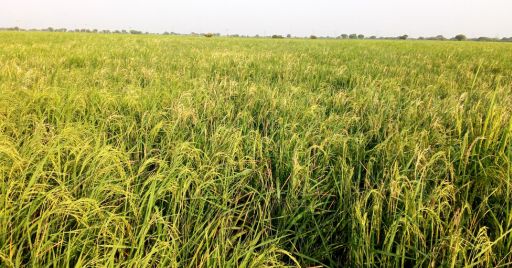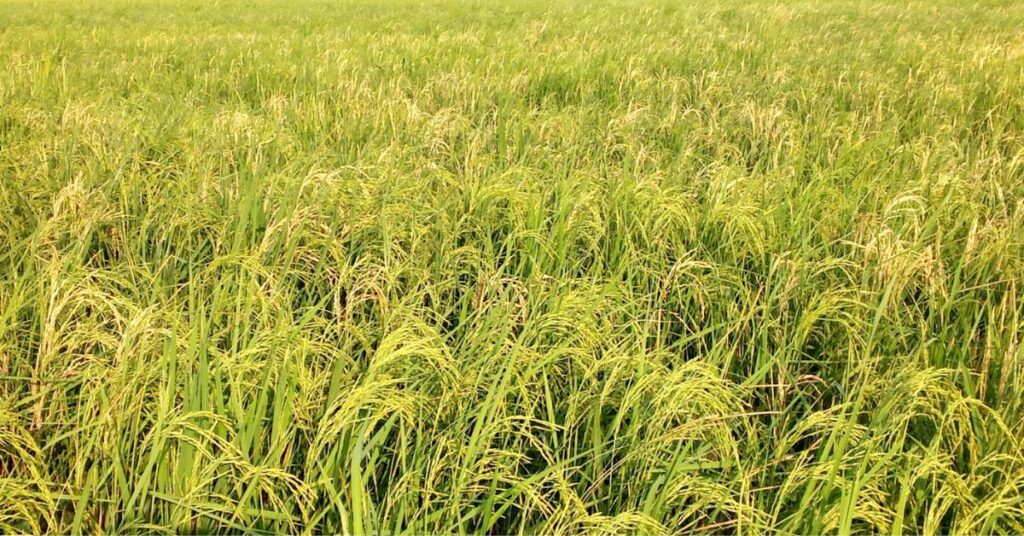The rice stem borer (Scirpophaga spp.) poses a significant threat to global rice production. This lepidopteran insect, in its larval stage, burrows into rice stems, disrupting vital nutrient transport and causing significant yield losses. But fear not! By understanding the biology of this pest and implementing effective management strategies, you can protect your precious rice crop.
Rice Stem Borer
There are several species of rice stem borers, with the yellow stem borer (Scirpophaga incertulas), white stem borer (Scirpophaga innotata) and pink stem borer (Sesamia inferens) being the most prevalent. Adult moths lay eggs on rice leaves. Upon hatching, the larvae bore into the stem, feeding on internal tissues and disrupting vascular flow.
Rice stem borers are destructive moth larvae that attack rice plants at any stage of their growth, from seedlings to mature plants. Three major species of rice stem borers cause damage to the rice crop are as follow:
Yellow stem borer
Scientific name: Scirpophaga incertulas
This is the most common and widespread species of rice stem borer, found throughout Asia. Adult yellow stem borers are small moths with a wingspan of about 1-1.5 cm. Their wings are white with a single black dot on each forewing. The larvae are creamy white caterpillars that can grow up to 2 cm long.
Among the 3 major species of rice stem borers, yellow stem borer causes more damage to the paddy crop. These stealthy caterpillars, burrow into rice stems, disrupting the flow of nutrients and weakening the plant. They can cause “dead hearts” (wilted central leaves) and hinder grain formation, responsible for yield losses of up to 80%.
White Stem Borer
Scientific name: Scirpophaga innotata
The white stem borer is similar in appearance to the yellow stem borer, but it is slightly larger and has two black dots on each forewing. It’s less common and widespread compared to the yellow stem borer.
Similar to the yellow stem borer, it weakens the stem and reduces grain formation.
Pink stem borer
Scientific name: Sesamia inferens
The pink stem borer is a different species of moth that attacks rice. Adult pink stem borers are larger than yellow or white stem borers, with a wingspan of up to 2.5 cm. Their wings are pink or brown with darker markings. The larvae are pink caterpillars that can grow up to 3 cm long.
all three species of rice stem borers damage rice plants by boring into the stems and feeding on the internal tissues. This can cause the death of the plant or reduce grain yield.
Symptoms of rice stem borer
Here are some of the signs and symptoms of rice stem borer damage:

- Deadhearts: In the vegetative stage, the central shoot of the rice plant may die, giving the appearance of a “dead heart“. the central shoot of the rice plant wilts or dies altogether due to the larva feeding on its insides.
- Whiteheads: In the reproductive stage, the developing panicle (seed head) may be damaged, resulting in a white, empty head.
- Wilting and stunted growth: Rice plants that are infested with stem borers may wilt and become stunted.
- Small holes in the stems: These holes are created by the stem borers as they enter and exit the stems.
Economic Impact and Importance of Management
Rice stem borer infestations can cause significant yield losses, ranging from 5% to a staggering 70% in severe cases. This translates to substantial economic losses for rice farmers worldwide.
Additionally, damaged stems become weak and susceptible to lodging (falling over), further reducing harvest efficiency. Effective management strategies are essential to protect rice crops and ensure food security.
Integrated Pest Management (IPM) Strategies for Rice Stem Borer Control
IPM prioritizes sustainable practices over-reliance on chemical solutions. Integrated Pest Management (IPM) promotes long-term crop health and environmental well-being, with its combination of various control tactics offering the most effective approach to managing rice stem borers.
Here are the key components of an IPM program.
Cultural practices
- Resistant varieties: Planting rice varieties known to be resistant to stem borers is a great first line of defense. Consult your local agricultural extension service or seed suppliers for recommendations on resistant varieties suited to your region.
- Crop rotation: Rotating rice with non-host crops like soybeans, mung beans, or fallow periods disrupts the borer’s life cycle and reduces their numbers in the field.
- Field sanitation: After harvest, remove leftover stubble and debris from the field. This eliminates hiding places for overwintering borers and reduces the next generation’s population.
- Water management: Maintain proper water levels in the field. While underwater, egg masses laid on the lower parts of the plant are less viable. However, avoid prolonged periods of stagnant water.
- Seeding practices: Early planting in some regions can help rice plants mature before peak borer activity. Additionally, clip the leaf tips of seedlings before transplanting to remove potential egg masses.
Mechanical Methods
- Light Traps: Attract and eliminate adult moths using strategically placed light traps. This helps reduce overall stem borer populations before egg-laying occurs.
- Egg Mass Removal: Regularly scouting fields and manually removing egg masses significantly reduces the number of hatching larvae.
Monitoring and Control
- Scouting: Regularly inspect your rice fields for signs of stem borer damage, such as deadhearts, whiteheads, or wilting plants. This allows for early detection and intervention.
- Natural enemies: Encourage natural predators and parasites like wasps and spiders in your fields. They can help keep borer populations in check.
- Biological control: Introduce commercially available biocontrol agents like Trichogramma wasps, which parasitize stem borer eggs.
Chemical control of rice stem borer
- Chlorantraniliprole 0.5% GR + Thiamethoxam 1% GR: 2.5 kg/acre, use after 20-30 days of transplanting.
- Chlorantraniliprole 0.4% GR: 4.0 kg/acre, use after 20-30 days of transplanting.
- Cartap Hydrochloride 50% SP: 400 gm/acre in 150-200 liters of water.
- Chlorpyrifos 50% and Cypermethrin 5% EC: 400 ml/acre or 2.0ml/liter of water.
By implementing a combination of these prevention and control methods, you can effectively manage rice stem borers and protect your rice crop.
How helpful was this post for you, tell me in the comment box and you can also give us your advice, your comments and advice are very important to us.
Thank you..!
